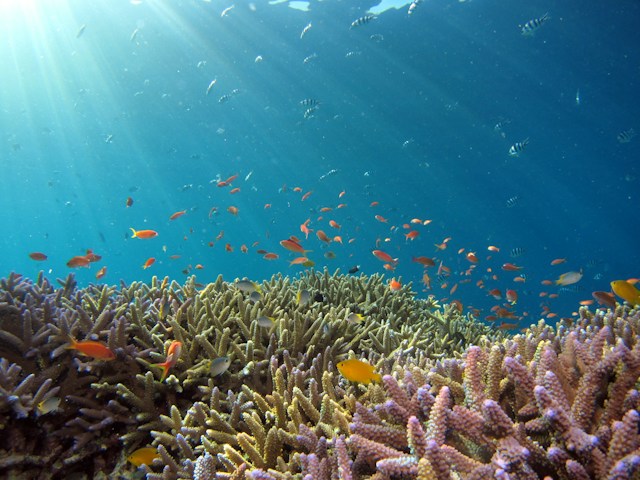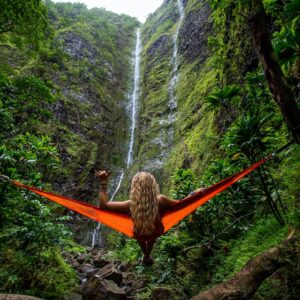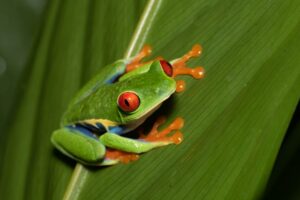The Belize Barrier Reef and the Great Blue Hole are an underwater snorkeler’s dream; an enormous circular sinkhole first discovered by Jacques Cousteau in 1971 in Lighthouse Reef. Even from space, it can be viewed!
Belize has taken numerous measures to preserve its reef, including banning offshore drilling, creating no-fishing zones, and banning single-use plastics – efforts that have resulted in its removal from the endangered list.
Snorkeling and Scuba Diving
The Belize Barrier Reef, recognized by UNESCO as a World Heritage site, is home to one of the world’s most biodiverse reef systems – home to over 500 species of fish, hundreds of invertebrate creatures and marine mammals such as dolphins and whale sharks.
Reefs provide important habitat for many rare and threatened species such as West Indian Manatees, Hawksbill Turtles, and Loggerhead Turtles as well as Spotted Eagle Rays and Nurse Sharks – making the reef both an income generator for countries and an invaluable natural resource and tourist attraction.
Belize’s best season for snorkeling is from November to May, as this will allow visitors to avoid rainy and overcast conditions that obstruct underwater visibility and make coral and marine life even more vibrant.
Hol Chan Marine Reserve, Turneffe Atoll, and Glover’s Reef Atoll are among the premier snorkeling locations on Belize’s Barrier Reef, each offering exquisite diving conditions with incredible marine species and unforgettable experiences.
At Hol Chan Marine Reserve, visitors can discover the breathtaking Great Blue Hole; it is one of the largest sinkholes worldwide. This incredible natural phenomenon was formed when an ancient cave collapsed into an inaccessible circular area filled with stalactites and stalagmites forming its perimeters.
Ranguana Caye is another top snorkeling spot, providing snorkelers an up-close and personal encounter with sea turtles, stingrays, and other marine life. It offers a scenic boat ride out to this small island where boat riders can see turtles, stingrays, and other marine life as they pass close by; after spending all day snorkeling it also makes a perfect place for some refreshing drinks and fresh seafood to unwind after their day of diving into marine life!
Half Moon Caye and Man O’War Caye Islands provide another highlight for Belizean snorkelers. Here you can spot seahorses, tropical fish species, and stunning coral formations that make the Belize Barrier Reef so iconic.
Marine Life
Belize’s second-largest barrier reef boasts an astounding variety of marine life. Home to hundreds of hard and soft coral species as well as thousands of fish species, snorkelers and divers may witness sea turtles, manatees and even an American marine crocodile while corals provide food for predatory fish such as tarpon, permit, barracuda and snapper.
Coral polyps feed at night by extending their tentacles towards the surface and sifting through an invisible layer of organic debris in the water’s surface. Once collected, this debris is then fed back through small openings in their protective hardened skeletons into their polyps and the process continues, eventually creating dense networks of coral colonies which together make up the Belize Barrier Reef Reserve System (BBRRS).
These underwater habitats support not only corals but also hard and soft-bodied fishes and mollusks, along with marine turtles, manatees, and manatees that frequent coastal waters; deeper waters provide shelter to pelagic species like sailfish, marlin, mackerel, wahoo, and bonito – providing rich environments in which marine life flourishes.
BBRRS’ seven sites illustrate the evolution of reef development, providing essential habitat for threatened marine turtles, manatees, and American marine crocodiles as well as coastal lagoons, seagrass meadows, mangrove forests, and hundreds of sand cayes.
The central portion of the reef, from Laughing Bird Caye to Sapodilla and Glover’s Reef, has been hit hardest by climate change with mass bleaching events killing approximately 10 percent of coral colonies. Thanks to the efforts of local residents and volunteers, this region’s coral has recovered faster than elsewhere in the Caribbean.
Fragments of Hope is a non-profit organization headed by Marine Biologist Lisa Carne from the US that collaborates with locals in Placencia to transplant coral cuttings in vulnerable areas. Their efforts have had tremendous success at Laughing Bird Caye which now boasts 60 percent higher coral coverage compared to before Hurricane Iris hit. Furthermore, other initiatives in Belize that help protect reefs include banning bottom trawling and restricting oil exploration near barrier reefs.
Conservation Efforts
The Belize Barrier Reef is a UNESCO World Heritage Site and supports many of Belize’s key economic sectors, from fishing to tourism. But its ecosystem supports much more than this direct economic contribution; its vitality also extends far beyond direct financial contributions; helping protect coastal communities against rising storm risks while simultaneously helping climate change mitigation and adaptation efforts.
But the reef is fragile, due to overfishing and unchecked development which put intense pressure on marine resources and habitats – both of which threaten climate change and exacerbate these stresses. Furthermore, India’s debt was growing faster than its GDP which made it hard for government agencies to set aside money for environmental protection purposes.
WWF and our partners are taking an innovative approach to ocean conservation in Belize that leverages finance to protect coastal and marine ecosystems. By restructuring Belize’s debt, we can free up millions of dollars that can go toward protecting and restoring its coastal assets – like its famous Barrier Reef System – which can then be put towards protecting marine environments like the Great Barrier Reef System.
Step one should involve engaging with local communities to develop more sustainable livelihoods that reduce pressure on the reef by decreasing overfishing and land-use conflicts. Step two involves increasing the scale and effectiveness of marine-protection parks that include coral reefs, mangroves, seagrass beds, and other vital areas where wildlife spawns. Finally, step three involves strengthening protections for vital ecosystem services provided by healthy marine and coastal ecosystems such as erosion prevention or purification services.
Hol Chan Marine Reserve, just 15 minutes by plane from Belize City, offers visitors an unforgettable underwater nature documentary experience. Spotted eagle rays swoop silently overhead while rainbow parrotfish devour algae off healthy coral branches while distantly, 3-foot nurse sharks swim past slowly.
WWF and our partners in Belize are working to strengthen reef resilience through several new conservation initiatives, including our Water health project. Focusing on the Belize Barrier Reef Lagoon and inland watersheds to assess human impact on water quality which then influences reef conditions; Earth Observation provides official data for government decision-making while in-situ monitoring gives insight into its state.
Accommodations
If you’re planning a visit to Belize and want to explore its Reef, Hopkins beachside hotels provide an ideal starting point. Here, you will be close to hubs for snorkeling and scuba diving like Ambergris Caye and Caye Caulker; for an alternative experience visit smaller islands nearer to the Reef such as Laughing Bird Caye whose dense coral bloom gives an impression that appears black from above.
By boat, exploring the Reef can also be immensely enjoyable. Local tour operators offer kayak or private sailboat rentals as well as guided sea-kayaking expeditions that allow kayakers to see it up close. Kayakers can explore remote beaches and coves as well as swim to the top of the nearby Blue Hole for its otherworldly cave formations and ethereal light patterns at sunrise and sunset.
Many travelers opt to stay at a tropical jungle resort such as Coco Plum Island Resort or White Sands and take day trips out to the Reef for an exciting land-and-sea experience. Thanks to Belize’s subtropical climate, which means the waters surrounding the Barrier Reef remain warm year-round; therefore it is ideal for sun protection, wildlife viewing binoculars and sun protection hats – plus local commuter airlines such as Maya Island Air or Tropic Air make this easy.
The Belize Barrier Reef Reserve System contains seven marine protected areas, from shelf lagoons and offshore atolls to coastal habitats. It boasts extraordinary marine biodiversity with more than 500 fish species, over 100 invertebrate species, endangered West Indian manatees, whale sharks and whale sharks – you’re likely to spot many when diving and snorkeling around it, such as Hol Chan Marine Reserve where nurse sharks and stingrays gather at Shark Ray Alley; alternative diving locations in Belize’s Barrier Reef include Turneffe Atoll or Glover’s Reef Atoll where exceptional underwater visibility allows visitors to discover exotic marine life!




